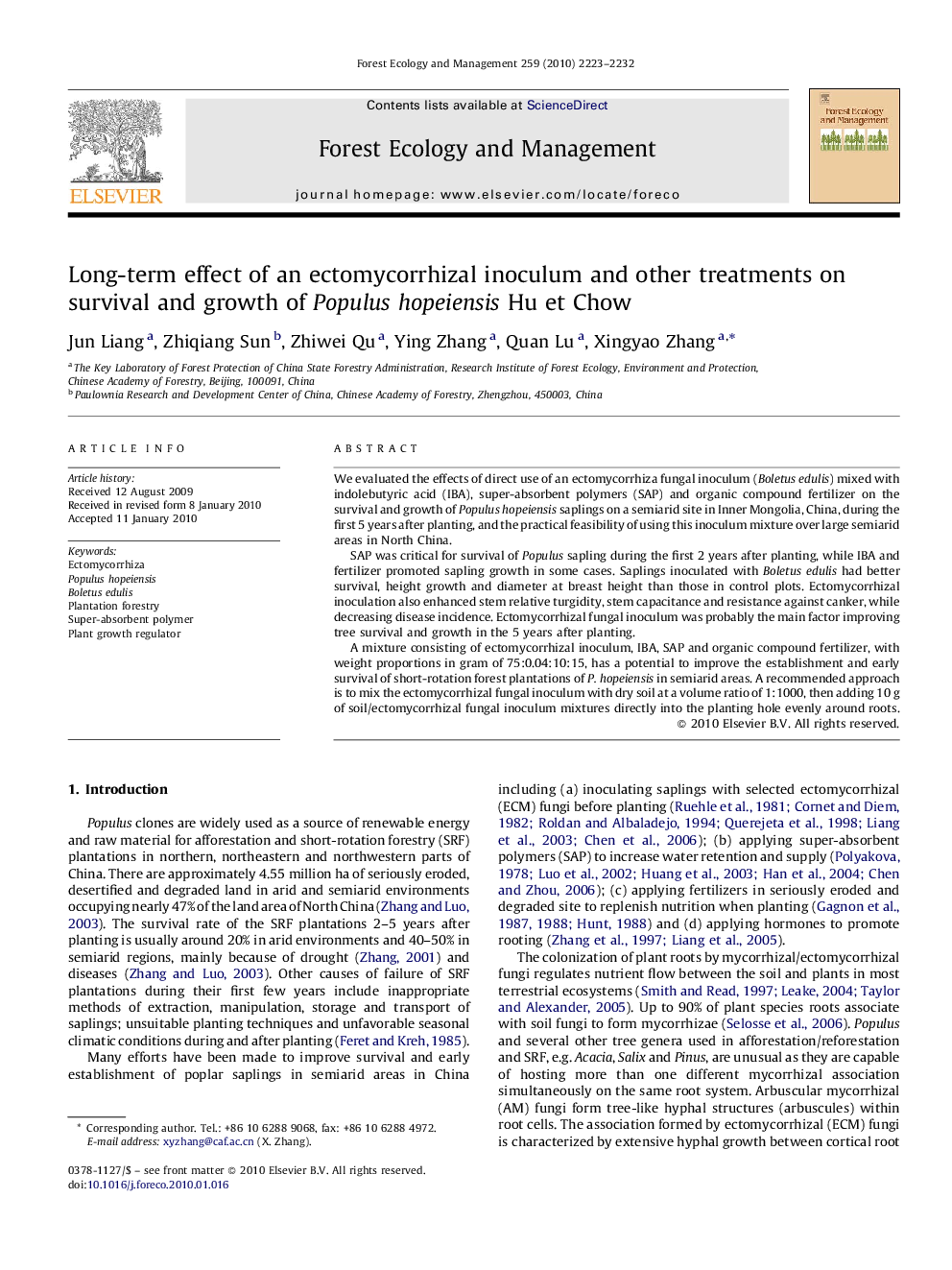| Article ID | Journal | Published Year | Pages | File Type |
|---|---|---|---|---|
| 88142 | Forest Ecology and Management | 2010 | 10 Pages |
We evaluated the effects of direct use of an ectomycorrhiza fungal inoculum (Boletusedulis) mixed with indolebutyric acid (IBA), super-absorbent polymers (SAP) and organic compound fertilizer on the survival and growth of Populus hopeiensis saplings on a semiarid site in Inner Mongolia, China, during the first 5 years after planting, and the practical feasibility of using this inoculum mixture over large semiarid areas in North China.SAP was critical for survival of Populus sapling during the first 2 years after planting, while IBA and fertilizer promoted sapling growth in some cases. Saplings inoculated with Boletusedulis had better survival, height growth and diameter at breast height than those in control plots. Ectomycorrhizal inoculation also enhanced stem relative turgidity, stem capacitance and resistance against canker, while decreasing disease incidence. Ectomycorrhizal fungal inoculum was probably the main factor improving tree survival and growth in the 5 years after planting.A mixture consisting of ectomycorrhizal inoculum, IBA, SAP and organic compound fertilizer, with weight proportions in gram of 75:0.04:10:15, has a potential to improve the establishment and early survival of short-rotation forest plantations of P. hopeiensis in semiarid areas. A recommended approach is to mix the ectomycorrhizal fungal inoculum with dry soil at a volume ratio of 1:1000, then adding 10 g of soil/ectomycorrhizal fungal inoculum mixtures directly into the planting hole evenly around roots.
